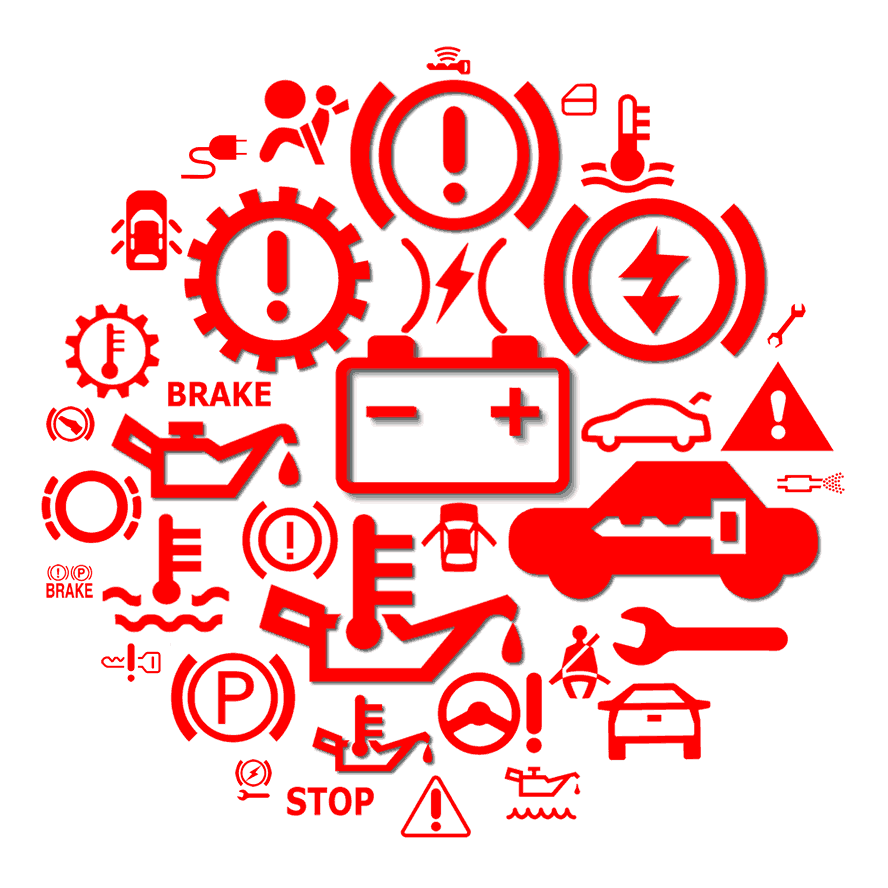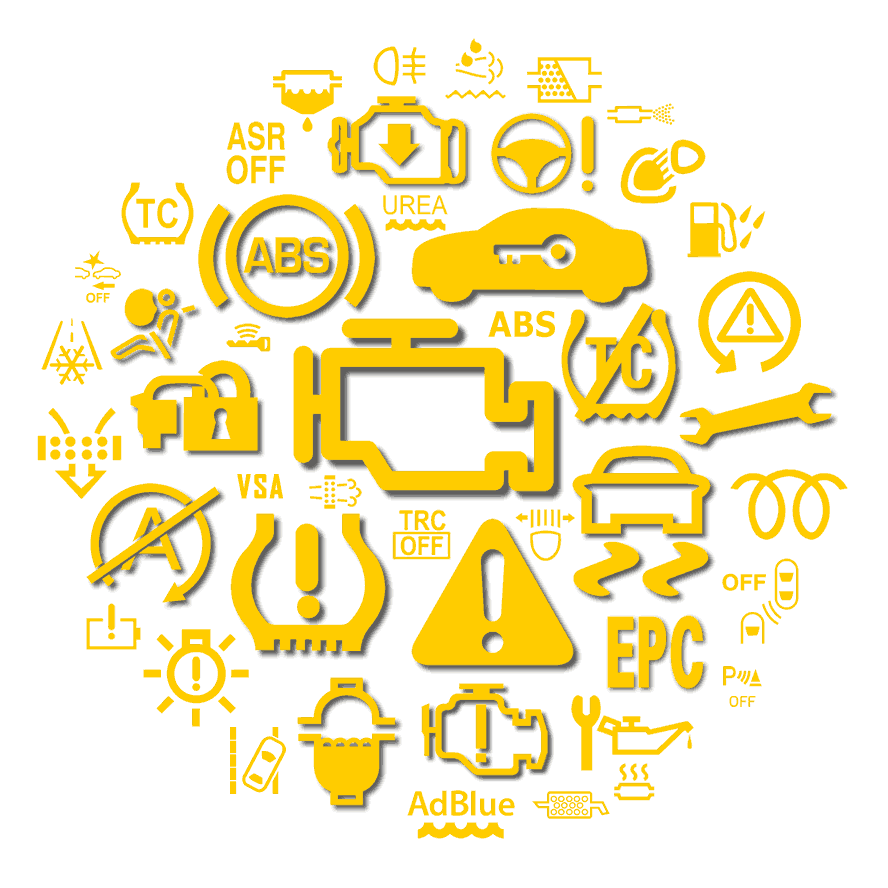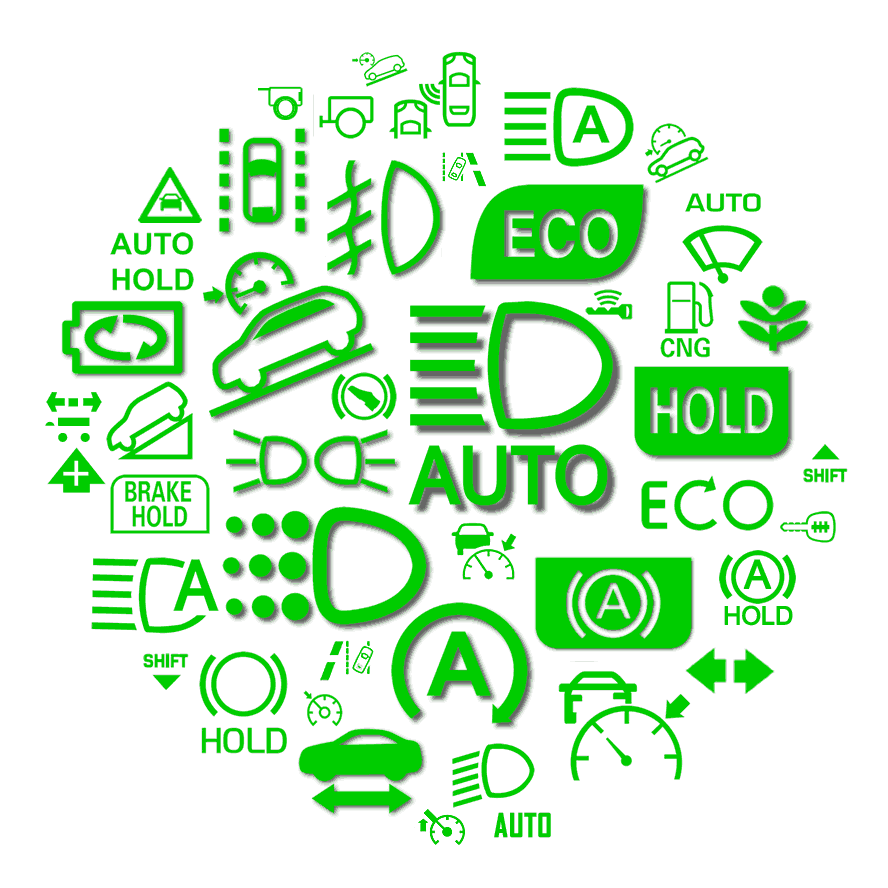Car Warning Light Colour Meaning
All modern road cars have onboard computers that with the use of sensors, constantly check the health, safety and maintenance status of our vehicle. Warning lights are used to convey to the driver any issues the car is experiencing, or simply to tell you that a system is active.
Different makes and models of cars may use a combination of generic warning symbols, along with specific symbols to their brand. But one thing all car brands have in common is a car warning light colour system.
What do the colours of the dashboard symbols mean exactly? The different colours are used so that the driver knows if there’s a serious problem that requires immediate attention, non-urgent issue, or simply that a system has been activated. You don’t necessarily need to know right away what the actual symbol means, but you do need to know the car warning light colour system.
Red Warning Lights
Red warning lights are used to indicate a serious, urgent issue that requires immediate attention. Ared warning light may illuminate for the following reasons:
Safety Risk to Vehicle Occupants
A red light may indicate a risk to vehicle occupants, for example; the seat belt not being fastened, the airbags not functioning, or a problem with the car’s braking system.

Major Fault with the Vehicle
Red lights are also used when the vehicle has a serious fault and is at risk of imminent breakdown. For example; the engine coolant overheating, a problem with the charging system (battery light) or the engine oil pressure being too low.
If a red light comes on while driving and you’re not sure what it means, it’s recommended that you find a safe area to stop at, switch off the engine and investigate the warning symbol. Continued driving may result in a risk to safety or may cause damage to the vehicle’s engine.
Yellow Warning Lights
Yellow warning lights can have very different meanings, but in general, a yellow warning light is less serious or urgent than red warning lights. Unlike red warning lights that may require immediate attention by stopping the vehicle, if a yellow light comes on, you can usually continue with your journey.

A yellow warning light can illuminate for the following reasons:
Non-urgent Fault
A non-urgent fault usually means that you can continue driving, but have your car seen to as soon as possible. Quite a common example is the engine warning light. There are lots of things that can trigger the engine warning light, but it’s usually fine to continue driving. In some cases however, if you leave the problem undiagnosed for too long, the fault may worsen.
Maintenance Issue
Yellow warning lights are also used to indicate that vehicle maintenance such as an oil change is due. Or that a deterioration in oil has been detected. Other vehicle maintenance can have dedicated warning lights for brake pads, filters etc.
Vehicle System Deactivated
If a vehicle safety system is on by default at every engine start, but has been manually deactivated, a yellow warning light will illuminate to remind the driver that the system if off. A example is the Electronic Stability Control (ESC) system which is always on by default.
Green or Blue Warning Lights
Green or blue light illuminate when a system is switched on and active. Typically, this is commonly associated with the vehicle’s exterior lights but can be for other safety systems such as the blind spot monitoring system, collision alert etc.

The blue symbol is usually only associated with the vehicle’s high beam being activated, though certain models of vehicles may have their own specific blue symbols.
White Warning Lights
Your car may also have white warning lights. White warning lights are usually to inform you that a system is switched on and ready, but not currently active.